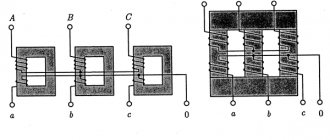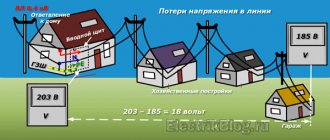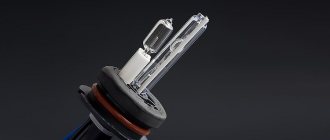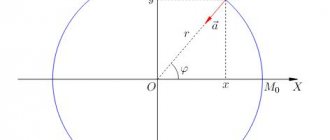About halogens
Of the halogens, only iodine is capable of possessing properties characteristic of metals. Other substances (bromine, chlorine, astatine and fluorine) lack even indirect signs of metals. When in 1811 I. Schweigger, a German chemist, proposed to call the new isolated substance chlorine, the name did not stick. Since 1841, the entire group of “solids” began to be called halogens. This is how the word halogens is translated from Greek.
You can better understand what a halogen is if you characterize each of the elements included in this series:
- Fluorine (F) – found in rock salts. Cryolite, fluorspar and fluorite minerals are predominantly saturated with it;
- Chlorine (Cl) is a popular halogen, found in the world in sodium chloride, which is the main raw material for chloride compounds;
- Bromine (Br) is an element found in sea waters and salty bodies of water as a potassium and sodium salt in combination with chlorine sulfates;
- Iodine (I) – found everywhere, the most iodine is in seaweed and algae;
- Astatine (At) is an artificial substance not found in nature; it is obtained as a result of the precipitation of particles during irradiation of bismuth or thorium.
For your information. Sodium chloride (NaCl) is one of the sources of chlorine. In everyday life it is called table salt. Present in the aqueous liquid of the sea, in its natural state it is found as a gray mineral - halite.
Rock salt crystals
Halogens
The elements of the main subgroup of group VII of the periodic table - fluorine, chlorine, bromine, iodine and astatine - are called halogens, which translated from Greek means “giving birth to salts”. Indeed, the products of the interaction of halogens with metals are salts.
One of the roads leading to Rome to the salt mining sites was called Via Salaria (Salt Road). This ancient name has survived to this day. Why is ordinary table salt, familiar to everyone since childhood, given such honors?
Today it is publicly available, but in ancient times it was valued on a par with gold: Roman legionnaires were sometimes paid not in money, but in table salt. Interestingly, the English word salary comes from the Latin sal (salt).
Extraction of salt from sea water. Engraving from the book “On Mining and Metallurgy” by G. Agricola. Edition of 1557. Not far from the seashore, several pools are dug, communicating with each other and connected to the sea by a canal. Under the influence of the sun's heat, water evaporates and salt crystallizes in the pools. It is raked with wooden rakes and put into tubs with shovels.
In ancient times, salt was extracted from salt lakes located near the mouth of the Tiber River. Later they began to obtain it from sea water. For this purpose, areas of land that were flooded during high tide were specially fenced off. As the water evaporated, table salt crystallized first. It was collected, and the remaining brine, containing other salts, was poured back into the sea.
In the Middle Ages, hydrochloric acid HCl was called hydrochloric alcohol. It was first mentioned in the writings of the German alchemist Vasily Valentin in the second half of the 15th century. He described a method for producing hydrochloric alcohol by dry distillation of a mixture consisting of vitriol, alum and table salt. Alchemists studied the effect of hydrochloric alcohol on metals and oxides. But the composition of this substance has long been a mystery to scientists.
How halogens were discovered
According to the theory of acids put forward by A.L. Lavoisier , their special properties are due to the presence not of hydrogen, but of oxygen. Lavoisier hypothesized that hydrochloric acid contains, together with oxygen (and possibly hydrogen), a new element, which he called muria (from the Latin muria - “brine”). Today we know that this element is chlorine.
Free chlorine (from the Greek “chloros” - “yellow-green”) was first obtained in 1774 by K.V. Scheele by the action of hydrochloric acid on the mineral pyrolusite MnO2:
MnO2 + 4HCl = MnCl2 + Cl2↑ + 2H2O
But for a long time, chlorine was considered “oxidized hydrochloric acid,” an oxide of the element muria, based on the property of this gas to interact with alkali solutions, like acidic oxides. For many years, scientists tried unsuccessfully to restore “murium oxide,” until finally G. Davy in 1810 suggested that it was a new simple substance. Davy gave it the name "Chlorine". It is still used in English today. The word “chlorine” was proposed in 1812 by J.L. Gay-Lussac . At the same time, the formula of hydrochloric acid was established, and the oxygen theory of acids was replaced by the hydrogen theory, according to which hydrogen is necessarily an integral part.
Fluorite, or fluorspar, CaF2 has been used since ancient times as a flux - a substance that is added to ore during metal smelting to lower its melting point. The solution formed when fluorite is exposed to sulfuric acid contains hydrofluoric acid HF. Already in the 17th century. it was used for etching patterns on glassware. This acid was isolated in its pure form by Scheele in 1771, and its composition was established by the French scientist Andre Marie Ampere in 1810. He also proposed calling the element contained in this acid fluorine (from the Greek “fluoros” - “death”).
Mineral fluorite
The cherished dream of many generations of chemists was to isolate fluorine in free form. Davy was one of the first to make such an attempt, but his electrolysis of hydrofluoric acid did not bring results. A quick death prevented the scientist from continuing his research. Chemists who, following Davy, devoted themselves to the problem of isolating free fluorine, received serious poisoning without achieving what they wanted, because many of them did not realize how strong an oxidizing agent this gas is. Edmond Fremy, a professor at the Ecole Polytechnique in Paris, even observed in 1854–1856 how individual fluorine bubbles were formed during the electrolysis of molten fluorite, but was unable to collect it. This was first achieved in 1886 by the French chemist Henri Moissan, who in 1887 isolated liquid fluorine. Shortly before his death, Moissan was awarded the Nobel Prize for obtaining chemically pure fluorine.
Bromine was discovered in 1826 by the French chemist A.Zh. Balar. This was his first independent work, and it so happened that it was crowned with an outstanding result - the discovery of a new chemical element. Passing chlorine through the brine obtained by evaporating sea water, Balar noticed that the solution turned brown. A modern chemist can easily explain this phenomenon: chlorine displaces bromine from bromides contained in sea water: 2KBr + Cl2 = 2KCl + Br2.
A. J. Balar
Ironically, the famous German chemist Justus Liebig, several years before Balar, actually held an aqueous solution of bromine in his hands, but did not pay attention to it, mistaking it for a compound of chlorine with iodine. Annoyed by his arrogance, Liebig subsequently said: “It was not Balar who discovered bromine, but bromine who discovered Balar.”
A commission of the Paris Academy of Sciences recommended naming the new element based on the properties of its compounds, similar to the names of other halogens. Scientists considered the sharp unpleasant odor of this substance to be such a distinctive property. The element's name is derived from the Greek word "bromos", which means "stench".
Later, bromine began to be obtained by boiling acidified brine with pyrolusite MnO2:
MnO2 + 2NaBr + 2H2SO4 = MnSO4 + Br2 + Na2SO4 + 2H2O.
In 1811, the French chemist Bernard Courtois isolated iodine from the ash of seaweed (from the Greek “iodes” - “purple”, based on the color of the vapor).
The existence of the heaviest of the halogens, astatine, was predicted by D.I. Mendeleev, who called it ekaiod, i.e. the first analogue of iodine. However, it was obtained only in 1940 by a group of American scientists from the University of California. All isotopes of astatine are radioactive and have a short half-life - no more than 8.1 hours. Hence the name of the element, derived from the Greek “astatos” - “unstable”.
General physical and chemical properties of halogens
Molecules of simple halogen substances under normal conditions have the composition G2, i.e. F2, Cl2, Br2, I2. All halogens have a characteristic odor and are poisonous.
From top to bottom in the subgroup, with increasing serial number, the physical properties of simple substances-halogens naturally change: boiling and melting points, state of aggregation.
Fluorine is a light green gas; chlorine is an easily liquefied gas of yellow-green color; bromine is a heavy liquid of red-brown color; Iodine is a solid crystalline substance with a metallic luster. The solubility of simple halogen substances in water in the subgroup decreases from top to bottom. Fluorine actively interacts with water, chlorine is relatively slightly soluble in water, and bromine and iodine are even less soluble in water.
Since halogen atoms have one unpaired electron on their outer electron layer, they are characterized by valence I.
In addition to fluorine, the number of unpaired electrons in the atoms of all halogens in an excited state can increase, and therefore, according to the number of unpaired electrons, the halogen atoms in compounds can exhibit valence III, V, VII.
The oxidizing ability of halogen atoms and molecules from top to bottom in the subgroup decreases from fluorine to iodine, since with increasing atomic radius the ability of the halogen to attach electrons decreases, i.e. the non-metallic properties of halogens decrease. Fluorine is the strongest oxidizing agent, since the fluorine atom has the smallest radius compared to the atoms of other halogens.
The oxidative activity of halogens can be easily compared by studying the reactions of displacement of some halogens by others from aqueous solutions of halides. The following pattern is observed: a halogen with a lower atomic number displaces a halogen with a higher atomic number from the salts. For example, bromine displaces iodine from iodides: Br2 + 2KI = I2 + 2KBr, but does not react with chloride ions.
Halogen ions (except F—) are capable of donating electrons, so they are reducing agents. The reducing ability of halide ions increases from chloride ion to iodide ion: Cl— →Br— → I—.
All halogens easily interact with hydrogen according to the equation: Г2 + Н2 = 2НГ
Hydrogen halides (HF - hydrogen fluoride, HCl - hydrogen chloride, HBr - hydrogen bromide, HI - hydrogen iodide) are gaseous compounds that are easily soluble in water. Aqueous solutions of hydrogen halides are acids: HF – hydrofluoric (fluoric), HCl – hydrochloric (hydrochloric), HBr – hydrobromic, HI – hydroiodic.
In the series of acids HF→ HCl→ HBr→ HI, the acidic properties increase. This can be explained by the fact that from top to bottom in the halogen subgroup, with increasing charge of the atomic nucleus, the radii of the atoms increase. Of all the anoxic acids, hydroiodic acid is the strongest.
A number of halogen compounds with oxygen are known. However, all these compounds are unstable, cannot be obtained by direct interaction of elements with oxygen, and can only be obtained indirectly. Of the oxygen-containing compounds, the most stable are salts of oxygen-containing acids. In all oxygen-containing compounds, halogens, except fluorine, exhibit positive oxidation states +1, +3, +5 and +7.
In the series of oxygen-containing acids HClO→ HClO2→ HClO3→ HClO4, an increase in acidic properties is observed.
Download:
Download a free abstract on the topic: “Halogens” Halogens.docx (213 Downloads)
You can download abstracts on other topics here
*in the recording image is a photograph of the fluorite mineral
Similar
Atomic structure and oxidation states
Main chemical sources of electricity
The electronic formula of the outer orbit of carbon atoms is ns2np5. When arranged in order:
- F—2s22p5;
- Cl—3s23p5;
- Br—4s24p5;
- I - 5s25p5;
- At - 6s26p5.
The halogen atoms successfully add to the 7 electrons of their own, available on the outermost shell, one missing from someone else. Therefore, upon interaction, the degree of oxidation (-1) is detected. In unions where elements with higher electronegativity are present, only fluorine does not change degree (-1).
The rest change it to a positive degree: Cl (+1), Br (+3), I (+5), At (+7).
Graphic picture of the electronic structure of the boron atom Br
The meaning of halogens
Halogens are elements from the periodic table of group 17 of Mendeleev, and according to the outdated classification - 7 of the main subgroup. The halogens include only 5 chemical elements, including fluorine, chlorine, iodine, astatine and bromine. All of them are non-metals. Halogens are very active oxidizing agents, and at the external level these elements have 7 electrons.
What are halogens, why did they get this name? The word "halogen" comes from two Greek words that together mean "the birth of salt." One of the elements in this group, chlorine, forms a salt together with sodium.
The prevalence of elements and the production of simple substances
The larger the atomic radius, the lower the presence of salts in the body of the planet. The value of r, the radius of a fluorine atom, compared to the radius of an iodine atom, indicates that fluorine is more common than iodine. There are only grams of astatine in the planet's crust.
Transition resistance
Industry produces halogens (outdated name) in large quantities. At the same time, chlorine leads in terms of the quantity of manufactured products.
Simple substances are obtained using halides by oxidizing them. For this purpose, electrolytic oxidation is used. Moreover, due to the fact that the positive potentials of fluorine and chlorine are quite high, it is necessary to use strong oxidizing agents.
Important! Fluorine electrolysis is complicated by the inability to use aqueous solutions. Its oxidation potential is higher and it can react with water, so hydrofluoric acid is used.
Electrolysis of NaCl using graphite anodes allows the production of chlorine. The cathodes can be:
- iron;
- liquid mercury;
- steel.
The equation describing this reaction is:
2Cl- —› Cl2 (g.) + 2e-.
By performing the chemical oxidation of bromide ion from seawater, bromine is obtained.
Iodine is also extracted using brines saturated with it. Both processes are carried out using chlorine as an oxidizing agent. An air flow passing through the solution removes I2 and Br2.
Halogen production, oxidation formulas
Characteristics of substances
Let's find out what halogens are in chemistry. The characteristics of the list of halogens are as follows:
- the structure of the outer layer of electrons is nS2nP5,
- as the number in the table increases, the radius of the atom becomes larger, electronegativity decreases, and the properties of the nonmetal decrease,
- are pronounced oxidizing agents, and this ability of elements decreases as the mass of the atom increases (the only thing that halogen does not react with are noble gases),
- all molecules contain 2 atoms,
- The strength of acids increases as the relative mass of the atom increases.
The periodic table shows that the higher an element is, the stronger its oxidizing abilities.
Oxidative properties of atoms
Fluorine
Under normal conditions it is a pale yellow gas. Can be obtained by electrolysis of KHF2. Reacts with water to form hydrogen fluoride and oxygen. The reaction of hydrogen and fluorine occurs very actively. Interacts with metals and non-metals.
Hydrochloric acid is weak; hydrogen fluoride dissociates reversibly in water, releasing H+ and F- ions.
Hydrofluoric acid can dissolve glass:
SiO2 + 4НF → SiF4 + 2Н2О.
Chlorine
It is a greenish gas with a suffocating odor. Examples of reactions that can be used to obtain it:
- МnO2 + 4НCl → МnСl2 + Сl2+ 2Н2O,
- 2КМnO4 + 16НCl → 2МnСl2 + 5Сl2 + 2КЛ + 8Н2O.
Let's find out what the chemical properties of chlorine are:
- Interaction with metals: 2K + Cl2 → 2КCl.
- Reaction with non-metals: 2P + 3Cl2 → 2PCl3.
- Reactions with alkalis: Сl2 + Сa(ОH)2 → CaОCl2 + H2O.
- Displacement of iodine: Cl2 + 2→ 2 + I2.
List of common acids:
- hypochlorous acid HClO (chlorine oxidation state +1),
- chlorous acid HClO2 (oxidation state +3),
- perchloric acid HClO3 (oxidation state +5),
- perchloric acid HClO4 (oxidation state +7).
This is interesting! Why is it done and what is salt hydrolysis?
Bromine
Bromine is a heavy, dark liquid with a bad odor. Many are interested in what he reacts with. This element reacts with:
- metals: 2Na + Br2 → 2NaBr,
- nonmetals: H2 + Br2 → 2НВr,
- water: H2 + H2O → HBr + HBrO,
- reducing agents: Br2 + H2S → S + 2HBr.
Hydrogen bromide reacts well with salts, bases, and metal oxides.
Halogens
Iodine
Iodine is a dark purple crystalline substance. Dissolves in alcohol, carbon tetrachloride. Molecules interact with:
- metals: K + I → KI,
- hydrogen: H2 + I2 → 2HI,
- bases: 3I2 + 6KOH → 5KI + KIO3 + 3H2O.
Hydroiodic acid is a strong reducing agent. When salts react with lapis, insoluble silver iodide is formed. Iodic acid is a very strong oxidizing agent (oxidation state of iodine +7).
As for astatine, it can only be obtained artificially. Reduced with sulfur dioxide, precipitated with hydrogen sulfide. Reacts with iodine and bromine. Dissolves in weak hydrochloric and nitric acid.
The physical and chemical properties of the element tennesine have been little studied due to the short lifetime of its isotopes. It is assumed that heavy radioactive elements may have reducing activity.
Physical properties of halogens
Electrolysis
These are characteristics that describe color, smell, temperature changes in properties, as well as aggregate stay under normal conditions.
Physical properties of simple diatomic substances
Attention! Toxic substances such as halogens form mutual compounds: BrCl, ICl, IBr and others.
Three states (solid, liquid and gaseous) are inherent in salts at room temperature.
Chemical elements
Fluorine is an element with atomic number 9 and is designated by the symbol F. Elemental fluorine was first discovered in 1886 by isolating it from hydrofluoric acid. In its free state, fluorine exists as a diatomic molecule (F2) and is the most abundant halogen in the earth's crust. Fluorine is the most electronegative element on the periodic table. At room temperature it is a pale yellow gas. Fluorine also has a relatively small atomic radius. Its CO is -1, except in the elemental diatomic state, in which its oxidation state is zero. Fluorine is extremely reactive and reacts directly with all elements except helium (He), neon (Ne) and argon (Ar). In H2O solution, hydrofluoric acid (HF) is a weak acid. Although fluorine is highly electronegative, its electronegativity does not determine acidity; HF is a weak acid due to the fact that the fluoride ion is basic (pH > 7). In addition, fluorine produces very powerful oxidizing agents. For example, fluorine can react with the inert gas xenon to form the strong oxidizing agent xenon difluoride (XeF2). Fluoride has many uses.
Chlorine is an element with atomic number 17 and the chemical symbol Cl. Discovered in 1774 by isolating it from hydrochloric acid. In its elemental state it forms the diatomic molecule Cl2. Chlorine has several COs: -1, +1, 3, 5 and 7. At room temperature it is a light green gas. Since the bond that forms between two chlorine atoms is weak, the Cl2 molecule has a very high ability to form compounds. Chlorine reacts with metals to form salts called chlorides. Chlorine ions are the most common ions found in seawater. Chlorine also has two isotopes: 35Cl and 37Cl. Sodium chloride is the most common compound of all the chlorides.
Bromine is a chemical element with atomic number 35 and the symbol Br. It was first discovered in 1826. In its elemental form, bromine is a diatomic molecule Br2. At room temperature it is a reddish-brown liquid. Its COs are -1, + 1, 3, 4 and 5. Bromine is more active than iodine, but less active than chlorine. In addition, bromine has two isotopes: 79Br and 81Br. Bromine occurs as bromide salts dissolved in seawater. Global production of bromide has increased significantly in recent years due to its availability and long shelf life. Like other halogens, bromine is an oxidizing agent and is very toxic.
Iodine is a chemical element with atomic number 53 and symbol I. Iodine has oxidation states: -1, +1, +5 and +7. Exists as a diatomic molecule, I2. At room temperature it is a purple solid. Iodine has one stable isotope - 127I. First discovered in 1811 using seaweed and sulfuric acid. Currently, iodine ions can be isolated in seawater. Although iodine is not very soluble in water, its solubility can be increased by using individual iodides. Iodine plays an important role in the body, participating in the production of thyroid hormones.
Astatine is a radioactive element with atomic number 85 and the symbol At. Its possible oxidation states are -1, +1, 3, 5 and 7. The only halogen that is not a diatomic molecule. Under normal conditions it is a black metallic solid. Astatine is a very rare element, so little is known about it. In addition, astatine has a very short half-life, no longer than a few hours. Obtained in 1940 as a result of synthesis. Astatine is believed to be similar to iodine. Differs in metallic properties.
The table below shows the structure of halogen atoms and the structure of the outer layer of electrons.
| Halogen | Electron configuration |
| Fluorine | 1s2 2s2 2p5 |
| Chlorine | 3s2 3p5 |
| Bromine | 3d10 4s2 4p5 |
| Iodine | 4d10 5s2 5p5 |
| Astatine | 4f14 5d10 6s2 6p5 |
This structure of the outer layer of electrons means that the physical and chemical properties of halogens are similar. However, when comparing these elements, differences are also observed.
Chemical properties of halogens
The ability to react with different substances under the influence of third-party factors is individual for each of the elements under consideration.
Chemical characteristics of salts
When halogens come into contact with copper (a low-active metal), halides are obtained with the formula:
CuHal2, where Hal2 are the salts Br, Cl, F.
When halides react with halogens, the more active salt displaces the less active one from its solution. Chlorine, being an oxidizing agent, reacts in mixtures of iodine and bromine salts. Bromine does not react with chlorides, but can squeeze iodine out of iodides.
When exposed to organic compounds during chlorination of water or iodization of salt, halogenation occurs. In this case, a halogen atom is introduced into the compound. Halogenation can be accomplished by substitution, cleavage, or addition of a carbon atom to the atomic structure of organic compounds.
Interesting. Iodine, having low oxidizing abilities, does not squeeze out halogens from salts. Aqueous sulfites cannot react with fluorine at all; it reacts with H2O.
What are halogens
Perhaps many people have often been interested in the question of what halogens are in chemistry. These are elements belonging to group XVII of the periodic table. Previously, they were classified as the main subgroup of group VII. Halogens include fluorine, chlorine, bromine, iodine, and astatine.
Some chemists include the artificially synthesized substance tennesine with the number 117. This is an example of a halogen that is radioactive.
Substances in this group are classified as non-metals. They are considered the strongest oxidizing agents, and this chemical property of halogens changes as the atomic number decreases. The most active oxidizing agent is fluorine, which can even react with oxygen to form fluoride. Capable of exhibiting the properties of a reducing agent with an oxidation state of +7 (highest). It is not for nothing that the periodic table previously placed halogens in group 7.
In the process of chemical interaction with metals, they form salts (hence the name). The outer shell contains 7 electrons. Atoms attach the missing electron and thus fill it. Therefore, their oxidation state is -1. However, chlorine, bromine, iodine, astatine can have oxidation states of 1, 3, 5, 7 with a plus sign (being a reducing agent).
This is the answer to the question of what the halogen interacts with. The structural features of these substances are such that they react with almost all elements.
Interesting! The name "fluorine" comes from the Greek "destruction". This is a strong oxidizing agent that interacts with almost any substance. Fluorine atoms do not react with neon, helium and argon and some fluorides.
Application of halogens and their compounds
The use of salts is widely used in human life. Everyday life, medicine, chemical industry, military production are not all areas of use of salts.
For each element, the following points can be considered:
- F is a significant part of the composition of fluoropolymers that have high chemical, corrosion and thermal resistance. Fluorinated chlorofluorocarbons have previously been used in refrigerants and aerosols.
- Cl is a yellow-green gas in its natural form. Chlorine is used to disinfect wells, drinking water and artificial reservoirs. The most common use of chlorine in everyday life is to bleach things and clean dirty plumbing surfaces. Hydrochloric (muric) acid also contains chlorine.
- Br is a non-flammable substance used to extinguish fire in fire extinguishers. We also use bromine in medicine, as sedatives and megalytic remedies. For military purposes it is part of the chemistry of toxic substances.
- I – used as an antiseptic, it is a necessary element in the human body for the functioning of the thyroid gland.
- At – is not used due to its strong radioactivity.
Range of applications of halogens
Halogen gas added to the incandescent lamp cylinder allows you to increase the temperature of the built-in filament and the quality of light output. Bromine or iodine vapor pumped into a flask served to create halogen lamps and lamps.
Important! In such light sources, the spirals are less likely to burn out, the lamps are compact in size and can be powered by both alternating and direct voltage.
Halogen light is used in car headlight lamps, and the design allows the installation of both halogen incandescent lamps and conventional ones. In competitions between an LED source in a headlight and a halogen one, the latter is still in the lead.
Halogen compounds and their role in the human body
Salt compounds are present in the human body in different percentages. Exceeding concentrations, as well as decreasing them, significantly affects the state of the body.
Biological mission of halogens
Halogen toxicity
Halogens in dangerous concentrations and compounds affect humans as follows:
- Chlorine has a hazard class of 2. A concentration in the atmosphere of 1*10-4% already causes irritation of the mucous membrane, a dose of 0.01% leads to acute poisoning and respiratory arrest. It is a strong carcinogen that causes tuberculosis and promotes the formation of malignant tumors;
- Fluorine in the sodium fluoride compound causes death when ingested through the respiratory or digestive organs. Lethal concentration – 4-9 g. Primary symptoms – drooling, gagging. Secondary signs of poisoning are damage to the nervous and cardiovascular systems.
- Bromine causes spasms and suffocation during breathing even at a concentration of 1 * 10-3 in the volume of air. Toxic dose – 3 g, lethal – from 34 g, if ingested by a person.
- Iodine, when accidentally ingested in an amount of 3 g or more, affects the kidneys and cardiovascular system and blocks thyroid receptors.
The use of halogens and halides in industry and in everyday life brings more benefits than harm. Knowledge of the permissible concentration values and rules for using products that use salts allows you to use only their positive qualities.




